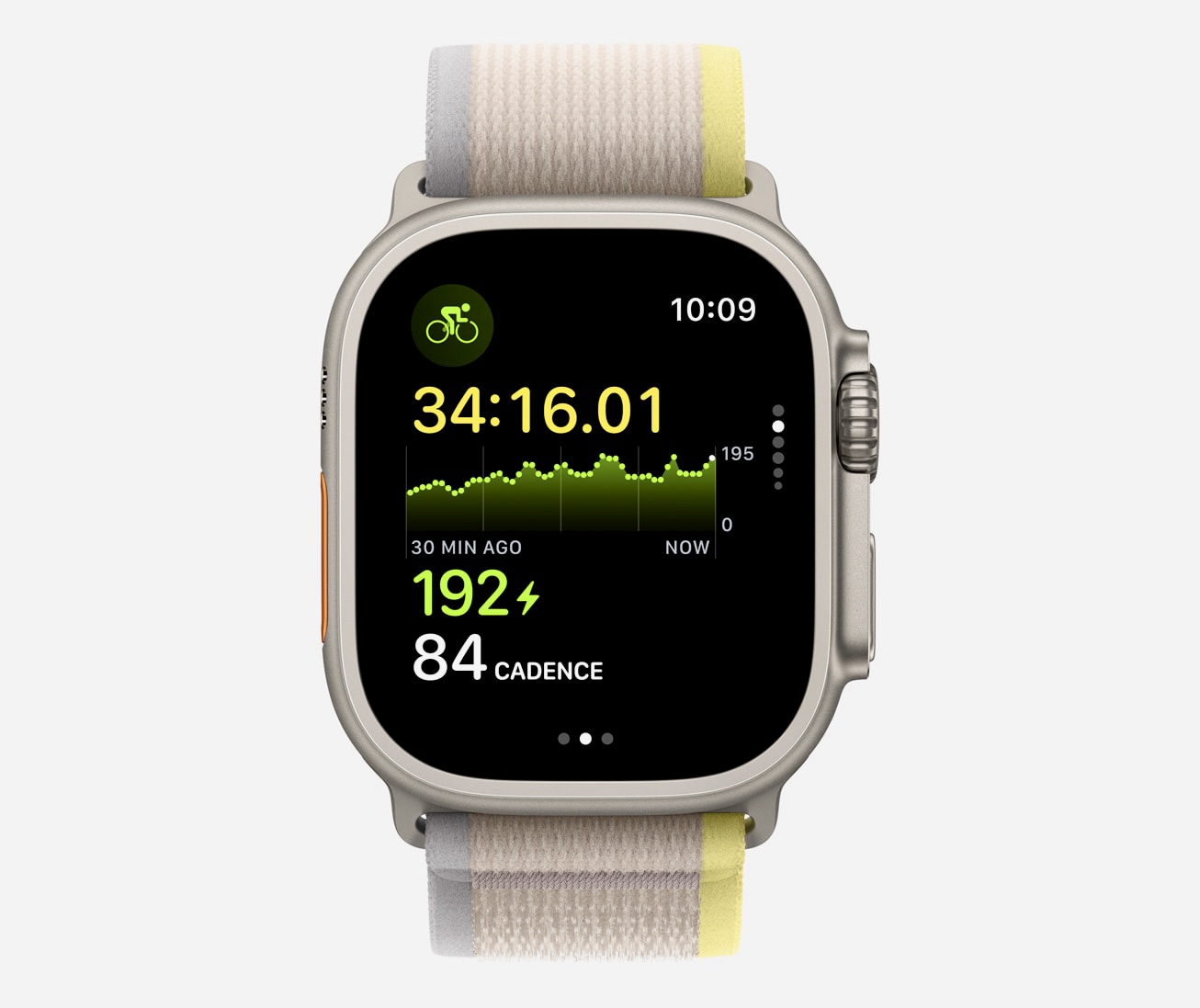

Thanks to Apple’s latest software update, when a cycling workout is started from the Apple Watch in watchOS 10, it will automatically show up as a Live Activity on iPhone and, when tapped, will utilize the full screen. Workout Views, such as Heart Rate Zones, Elevation, Race Route, Custom Workouts, and a new Cycling Speed view, have been optimized for the display size of iPhone, which can be mounted to a bike for convenient, easy viewing during a ride.
However, the big news is that the Apple Watch can now automatically connect to Bluetooth-enabled cycling accessories, such as power meters, speed sensors, and cadence sensors. This enables brand-new metrics, including cycling power (watts) and cadence (RPM), and additional Workout Views, including Power Zones. Bluetooth connection is supported for Indoor and Outdoor cycling workouts, as well as GymKit.
Additionally, new algorithms combining sensor data from Apple Watch and connected power meters can estimate Functional Threshold Power (FTP), the highest level of cycling intensity that a rider could theoretically maintain for an hour. Using FTP, Apple Watch calculates personalized Power Zones, used to easily see the current zone and track how long is spent in each, which is an effective and popular way of improving performance.
It’s also worth noting, starting in the US, the Apple Watch will display topographic maps with contour lines and enable users to search for nearby trailheads. The new mapping will also drop a pin at the last location where you had a cellular signal and another where you can make an SOS call using any network provider, which may come in handy when out on the trails.
Elsewhere, the watchOS 10 update builds on other cycling-specific features such as Fall Detection, relying on accelerometers to determine if the rider has crashed, subsequently alerting emergency services if movement isn’t detected after a minute.





